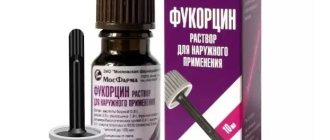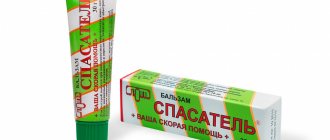Relevance
Depression is one of the main factors that determine our health.
Unfortunately, more and more individuals are susceptible to this disease and, according to preliminary data, by 2030 depression will become the leading cause of disability in countries with a high level of economic development. Typically, the first step in drug therapy for depression is the prescription of antidepressants. But monotherapy is not effective in all cases. Researchers in the UK conducted a multicentre phase 3 trial to evaluate the effectiveness of combining mirtazapine (a tricyclic antidepressant) with a serotonin reuptake inhibitor (SSRI) or a serotonin-noradernaline reuptake inhibitor (SNRI) in the treatment of treatment-resistant depression.
Mirtazapine Canon
Suicide/suicidal thoughts or clinical worsening of the disease
. In young people (under 24 years of age) with depression and other mental disorders, antidepressants, compared with placebo, increase the risk of suicidal thoughts and suicidal behavior, therefore, when prescribing Mirtazapine Canon to such patients, the risk of suicide should be weighed against the benefits of using the drug. In short-term studies, the risk of suicide did not increase in people over 24 years of age, but in patients over 65 years of age it decreased slightly.
Any depressive disorder itself increases the risk of suicide, so during treatment the patient should be monitored to identify disturbances or changes in behavior, as well as suicidal tendencies. Taking into account the possibility of suicide, especially at the beginning of treatment, the patient should be prescribed the smallest number of tablets of the drug in order to reduce the risk of overdose.
Bone marrow suppression
. Bone marrow suppression, usually manifested as granulocytopenia or agranulocytosis, is rarely observed with mirtazapine, appears mostly after 4-6 weeks of treatment and is reversible after discontinuation of treatment. The physician should pay close attention (and inform the patient) to symptoms such as fever, sore throat, stomatitis, and other signs of influenza-like syndrome. If such symptoms appear, you must stop treatment and have a blood test done.
Jaundice
. If signs of jaundice appear, treatment with Mirtazapine Canon should be interrupted.
Conditions requiring medical supervision
. The drug should be prescribed with caution, and patients should be monitored regularly and closely for the following conditions:
— Epilepsy and organic brain lesions
. Although clinical experience shows that epileptic seizures occur rarely both during treatment with mirtazapine and during treatment with other antidepressants, Mirtazapine Canon should be used with caution in patients with a history of epileptic seizures.
- Liver failure.
When mirtazapine was administered orally at a dose of 15 mg, the clearance of mirtazapine was reduced by approximately 35% in patients with mild to moderate hepatic impairment compared with patients with normal hepatic function. The mean plasma concentration of mirtazapine increased by approximately 55%.
- Kidney failure.
When mirtazapine was administered orally at a dose of 15 mg in patients with moderate (creatinine clearance 10-40 ml/min) or severe renal insufficiency (creatinine clearance less than 10 ml/min), the clearance of mirtazapine was reduced by approximately 30% and 50%, respectively, according to compared to healthy patients. The mean plasma concentrations of mirtazapine increased by 55% and 115%, respectively. In patients with mild renal failure (creatinine clearance 40-80 ml/min), no significant differences were observed compared with the control group.
- Heart diseases such as conduction disorders, angina pectoris and recent myocardial infarction.
In these cases, the usual precautions are required when prescribing Mirtazapine Canon and concomitant therapy.
-Reduced blood pressure.
- Diabetes.
In patients with diabetes, antidepressants may affect blood glucose levels. Adjustment of the dose of insulin and/or dose of oral hypoglycemic drugs may be required. Close monitoring is recommended.
As with the use of other antidepressants, the following conditions may occur when using the drug Mirtazapine Canon:
- Worsening of psychotic symptoms may occur when antidepressants are used to treat patients with schizophrenia or other mental disorders. Paranoid ideas may increase.
— The depressive phase of bipolar affective disorder during treatment can transform into a manic phase.
— Despite the fact that antidepressants are not addictive, based on post-registration experience, it turned out that abrupt discontinuation of therapy after prolonged use can cause “withdrawal” symptoms, it should be understood that these symptoms may be associated with the underlying disease. It is recommended to discontinue treatment with Mirtazapine Canon gradually.
— The drug Mirtazapine Canon should be prescribed with caution to patients with urinary disorders, incl. with prostatic hypertrophy, as well as in patients with acute angle-closure glaucoma and increased intraocular pressure (however, a negative effect of the drug is unlikely due to the fact that the anticholinergic activity of mirtazapine is very weak).
— Akathisia/psychomotor agitation. The use of antidepressants is associated with the development of akathisia, which is characterized by subjectively unpleasant or anxious arousal with increased motor activity. These symptoms are most likely to appear during the first few weeks of treatment. Increasing the dose in this case may have a negative impact on the patient's health.
- Hyponatremia. Extremely rare cases of hyponatremia have been reported with the use of mirtazapine. In patients at risk (elderly or patients taking drugs that can cause hyponatremia), Mirtazapine Canon should be prescribed with caution.
- Serotonin syndrome. With the simultaneous use of selective serotonin reuptake inhibitors and other serotonergic drugs, serotonin syndrome may occur. Symptoms of serotonin syndrome may include fever, rigidity, myoclonus, autonomic nervous system dysfunction with possible rapid fluctuations in vital signs, mental status changes including confusion, irritability and agitation, progressive confusion, and coma. Caution and close clinical monitoring should be used when these drugs are coadministered with mirtazapine. If such symptoms appear, you should stop treatment with Mirtazapine Canon and begin symptomatic treatment. Based on post-marketing experience, serotonin syndrome appears to occur very rarely in patients receiving mirtazapine monotherapy.
— Use in elderly patients. Elderly patients are usually more sensitive, especially to side effects. Clinical studies have not shown that elderly patients experience side effects more frequently than other age groups, but they may be more severe, but data are still limited.
— Patients are advised to avoid alcohol while being treated with Mirtazapine Canon.
- Caution should be used when prescribing benzodiazepines concomitantly with mirtazapine.
Study design
The study involved 106 general practices in the UK. 480 patients aged 18 years or older had a Beck Depression Inventory score of 14 or more. All patients were treated with an SSRI or SNRI for at least 6 weeks, but symptoms of depression persisted.
Of the 480 patients, 241 were randomized to mirtazapine and 239 to placebo. All patients continued to receive SSRIs or SNRIs.
Primary endpoint of the study
Beck Depression Inventory severity at 12 weeks was selected.
Secondary endpoints
included quality of life, anxiety, and incidence of side effects assessed at weeks 12, 24, and 52.
Efficacy of mirtazapine therapy in patients with depression and affective disorders
The transition of new drugs from the laboratory to everyday medical practice is always a difficult and partly contradictory process. A balanced attitude towards a medicine comes only at the stage when the doctor has a good idea of the limits of the medicine’s capabilities, based on an understanding of its advantages and disadvantages, and assigns it a stable place in his arsenal. The time it takes for a doctor to adapt to a new drug is reduced if the doctor has the opportunity to study in more detail the features of its action, using individual techniques from scientific research itself. This allows the doctor to more accurately summarize his experience and compare it with the experience of colleagues, and critically evaluate the literature data. This article is devoted to the results of one of these projects. The new drug chosen was mirtazapine, an antidepressant that is active in both the serotonergic and noradrenergic systems and selectively blocks a2 noradrenergic and 5-HT2 and 5HT3 serotonergic receptors. This neurochemical profile distinguishes mirtazapine from all currently known drugs in this group. According to the literature, mirtazapine has a powerful antidepressant effect with low severity of side effects characteristic of both tricyclic and serotonergic antidepressants [1,2].
Materials and methods
The study included 63 patients suffering from various types of affective disorder and experiencing moderate to severe depression.
The total score on the Hamilton Depression Scale (17 points) was chosen as a criterion for the severity of the condition. Severe depression was considered if this indicator was more than 25, moderate severity was more than 18, but less than 25. According to this criterion, patients were divided almost equally: with severe depression - 34 patients (average indicator on the Hamilton scale 31.6 ± 0.8 , moderate depression - 29 patients (average Hamilton scale 19.8±0.7).
The distribution of patients by diagnostic groups, as well as the average severity of depression on an objective and subjective scale by group, is shown in Table 1.
As can be seen from the table, the greatest severity of depression was observed in patients with bipolar disorder, and the least - with chronic depressive disorder, that is, dysthymia and cyclothymia.
The research project included 12 psychiatric hospitals in Moscow, St. Petersburg and other Russian cities. There were no strict inclusion or exclusion criteria: physicians were asked to prescribe mirtazapine to all patients hospitalized for depression who were clearly eligible for antidepressant therapy. Of the antidepressants, only mirtazapine was used. Freedom was also provided in the dosage of the drug within the instructions, where the therapeutic dose varied from 15 to 45 mg. The duration of the project for each patient was 42 days.
In order to formalize the data obtained, it was proposed to use the following scales:
• Hamilton Depression Scale (17 items) [3];
• Global Clinical Impression Scale;
• Beck Self-Rating Inventory for Depression (21 items) [4].
Results and discussion
The analysis of the results was carried out in two directions: the dynamics of the condition in patients of various nosological groups and the dynamics of the condition in patients with severe and moderate depression, regardless of their nosological affiliation.
All patients, except 1 patient from the group of patients with chronic affective disorder (dysthymia), who interrupted the study due to ineffectiveness of therapy, completed the study. The percentage of responders (50% reduction on the Hamilton scale) at the end of the study, depending on the course of affective psychosis, is presented in Table 2.
Bipolar affective disorder
Statistically significant changes in the Hamilton scale were observed already by the end of the first week (p < 0.001). By the end of the study, the average total score on the scale showed the absence of depression (7.4±1.9) (Fig. 1). By the end of the first week of therapy, the most significant changes were observed in such symptoms as depressive mood, sleep disturbance and mental anxiety, while changes in the severity of depressive symptoms such as guilt, suicidal thoughts, and lethargy underwent insignificant dynamics. By the end of the study, almost all symptoms assessed by the Hamilton scale had virtually disappeared. Only the mean performance and gastrointestinal disturbance scores were 1 (the mildest degree of disturbance). According to the global clinical impression scale, this group of patients progressed from “moderate severity of the disease” (average score 4.0±0.1) through “mild severity of the disease” (average score 3.4±0.1) to “the condition borders on normal” "(average value 2.1±0.2) (p<0.001). On the self-assessment scale, statistically significant changes were also detected by the end of the first week, but were less pronounced than on the Hamilton scale (Fig. 1). By the end of the study, the Beck scale showed an even more significant improvement (p < 0.001), but still its severity remained significantly less than on the Hamilton scale.
Recurrent depression
A similar picture was observed in the group of patients with recurrent depression (Fig. 2). The difference concerned a number of symptoms that decreased in severity in the first week of therapy. The following symptoms responded most quickly to treatment by the end of the first week: depressive mood (p<0.05), suicidal thoughts (p<0.05), sleep disorder (p<0.05), gastrointestinal dysfunction (p<0.05) and weight change (p<0.01). By the end of the study, almost all symptoms had completely disappeared. The exception was the indicators of performance and depressive mood, the average values of which were still slightly greater than one, which corresponds to a mild degree of severity of the disorder.
Depressive episode
The diagnosis of “depressive episode” was given to patients if the type of course at the current stage of the disease could not be determined. In the vast majority of cases, these were patients with a very short follow-up. The general nature of the dynamics of the Hamilton, Beck and global clinical impression scales was the same as in the two previous groups of patients: statistically significant changes on all scales were detected by the end of the first week of therapy. Improvement continued to increase during treatment. However, some differences were also revealed: along with the symptom of “depressed mood” (p<0.01), the symptom of “decreased performance” (p<0.05) responded most strongly to therapy (by the end of the first week). During the same period, the weight of patients changed statistically significantly (p<0.05). That is, the primary response to therapy combined both signs of a bipolar and monopolar course. Changes in other signs of the Hamilton scale were statistically insignificant in the first period of therapy, but were almost completely reduced by the end of the study (p<0.001).
Improvement on the physician-completed scale outpaced improvement on the patient-completed scale.
Chronic mood disorder
Of the variety of chronic mood disorders, only patients with dysthymia were represented here. Unlike other groups of patients, in these patients a pronounced improvement in condition was detected later, only at the end of the study, both on an objective and subjective scale (the first week of therapy - changes in indicators on the Hamilton and Beck scale are statistically insignificant, the end of the study - p<0.001 ). Despite this, the nature of changes on the Hamilton and Beck scales practically repeated the dynamics of scale indicators in other groups (Fig. 3). According to the Hamilton scale, in the first week of therapy, a statistically significant change was observed only in relation to the symptom “decreased performance” (p<0.05). It is interesting to note that the symptom “depressive mood” was no less pronounced here than in other groups (F34 - 3.1±0.2, F33 - 3.0±0.1, F32 - 3.0±0.1, F31 – 3.3±0.2) and responded to therapy more slowly. By the end of the study, in this group there was not a single average Hamilton scale score that exceeded 1, that is, all symptoms without exception underwent reverse development.
Summarizing the above, it can be noted that, regardless of the form of affective disorder, the nature of changes in the Hamilton and Beck indices during mirtazapine therapy was the same. In all groups, the dynamics of improvement on the Hamilton scale was faster and more pronounced than on the Beck scale. In other words, the Hamilton scale turned out to be more sensitive to changes in the condition of patients than the Beck scale, which is fully consistent with the literature data [6]. However, the Beck scale also well reflected the improvement in the patients’ condition, which complemented the clinical impression. At the end of the study, there were no differences in individual symptoms recorded by the Hamilton scale. However, a significant difference was found in the set of most quickly responsive symptoms in groups with different types of disease. It is interesting that in three out of four groups the symptom “depressive mood” was statistically significantly reduced already in the first week of therapy, while in none of the groups by this time was there a reduction in feelings of guilt, a symptom that, together with a depressed mood, forms the core of depression . In two of the four groups, a rapid increase in the performance of patients was noted, and in the group of patients with dysthymia this symptom was the only one that responded to treatment in the first week; in patients with bipolar and monopolar disease, on the contrary, this symptom responded later and persisted at the end of the study.
Dynamics of the condition of patients with moderate and severe depression
Among practitioners, based on everyday clinical experience, an opinion has formed that there is a difference in the nature of the response to therapy of patients with severe and milder depression. In some cases, severe depression is associated with resistant depression. It is assumed that for the treatment of patients with such severity of the disease it is necessary to use drugs with a less selective neurochemical effect (mainly tricyclic antidepressants), doses of antidepressants should be higher, and preference should be given to intramuscular and intravenous forms. In this regard, it was especially interesting to compare the dynamics of therapeutic response rates in patients with severe and moderate depression. It was found that according to the Hamilton and Beck scales, in both groups of patients, statistically significant changes occurred already in the first week of treatment and continued to increase thereafter (Fig. 4). In the first week of therapy, changes on the Hamilton scale in the group of patients with severe depression were even slightly greater than in the group with moderate depression (the percentage of changes was 39.9% versus 37.3%, the difference did not reach the level of statistical significance). In the next therapeutic period, the dynamics were reversed: by the end of the study, the percentage of changes in the first group was 27.5%, and in the second - 35.9% (p<0.05). In other words, patients with severe depression responded more quickly to therapy, but this rate subsequently decreased, while the improvement of patients with moderate depression was more uniform. According to the Beck scale, the situation looked different: the percentage of improvement in patients with severe depression was slightly greater throughout the study than in patients with milder depression (in patients of the first group, the percentage of improvement was 17.8% in the first week and 28.9% in the second week, in patients of the second group - 14.3% and 25.3%, respectively, but the difference did not reach the level of statistical significance). That is, there was a tendency for patients with severe depression to perceive the improvement in their condition more vividly than patients with moderate depression. It should be noted that, despite the absence of restrictions on the dosage of the drug, both in the first and in the other group of patients, the doses were the same and amounted to 30 mg. Thus, in some respects, the response to therapy in patients with severe depression was even more pronounced; the oral form of the drug was not an obstacle to obtaining a high therapeutic effect in patients with severe depression; the dose of the drug did not change depending on the severity of the condition.
Side effects
Side effects were observed in a small number of patients and were mild. The most common side effects were dry mouth (6 cases), drowsiness (2 cases), hypotension (2 cases). In isolated cases, the following were observed: a feeling of weakness, insomnia, anxiety and inversion of affect. Increased appetite and weight gain, known to be the most common side effects of mirtazapine therapy (7), were not listed as side effects in this study, although the Hamilton scale items showed changes in these symptoms.
Conclusion
Analysis of the results of the study allows us to draw two blocks of conclusions. The first concerns the technique of conducting this unusual study, the second concerns its results.
1. Results based on data obtained by practitioners rather than researchers are essentially the same as results based on data obtained under the special conditions of controlled studies:
• Not only the objective Hamilton scale, but also the Beck self-rating scale were sensitive to changes that occurred during mirtazapine therapy.
• The Beck Scale has been successfully used in patients with severe depression, although according to some authors, the severity of depression limits the use of this tool [4].
2. The study showed that mirtazapine was an effective antidepressant for various forms of mood disorder:
• the general nature of the dynamics of the therapeutic response was similar in patients with different types of course, but the immediate response (the first week of therapy) was significantly different, revealing the most “sensitive” signs to mirtazapine in patients with different types of affective disorder.
• Mirtazapine was found to be equally effective as an antidepressant for severe and moderate depression (5).
• greater severity of depressive disorders did not require an increase in dose.
The list of references can be found on the website https://www.rmj.ru
Mirtazapine –
Remeron (trade name)
(Organon)
Literature
1. Mosolov S.N., Kostyukova E.G., Serditov O.V. et al. Clinical efficacy and tolerability of the new antidepressant mirtazapine (Remeron) in severe depression. Social and Clinical Psychiatry, 1, 2000, pp. 55-60.
2. Kolyutskaya E.V., Yastrebov D.V. Use of mirtazapine in the treatment of depression. Russian medical journal N19, vol. 2, N2-3, 1999, pp. 50-52
3. Hamilton M. Development of a rating scale for primary depressive illness. Brit.J, of Soc.Clin.Psychol., 1967; 6: 278-296.
4. Beck AT, Ward CH, Mendelson M, Mock J, Erbaugh J. An inventory for measuring depression. Arch Gen Psychiatry 1961; 4: 561-571
5. Gorman JM. Mirtazapine: clinical overview Journ Clin Psychiatry 1999;60 (suppl 17),pp9-13
6. Moller HJ, von Zerssen D. Self-ration procedures in the evaluation of antidepressants. Psychopathology 1995; 28: 291-306
7. Guelfi JD, Ansseau M, Timmerman L et al. Efficacy and tolerability of mirtazapine vs venlafaxine in hospitalized, severely depressed patients with melancholia. Abstracts ECNP, Brussels, 2000.
| Applications to the article |
| Rice. 1. Dynamics of the general indicator according to the Hamilton and Beck scales (bipolar current) |
| Rice. 2. Dynamics of the general indicator according to the Hamilton and Beck scales (unipolar depressive course) |
| Rice. 3. Dynamics of the general indicator according to the Hamilton and Beck scales (dysthymia) |
| Rice. 4. Dynamics of the general indicator according to the Hamilton and Beck scales (moderate and severe depression) |
results
- At week 12, Beck score was 18.0 (12.3) in the mirtazapine group and 19.7 (12.4) in the placebo group (adjusted mean difference, −1.83 (95% CI −3.92 to 0.27). ); P=0.09).
- At weeks 24 and 52, there were also no significant differences in depressive symptoms between the study groups (difference, −0.85 (95% CI −3.12 -1.43) at week 24 and 0.17 (95% CI −2 .13-2.46) at 52 weeks).
- Side effects were more common in the mirtazapine group. It was noteworthy that 46 patients from the main group stopped treatment due to adverse events, while only 9 in the placebo group.
Clinical features of the use of mirtazapine (Mirtazonal)
Currently, antidepressants of various pharmacological groups are presented on the domestic market. A number of them are widely used in clinical practice and are well known to both psychiatrists and general practitioners. This primarily applies to selective serotonin reuptake inhibitors (SSRIs). Other drugs are less known, despite the data available in the literature and the extensive experience of their use by foreign colleagues for various mental disorders. One of these antidepressants is mirtazapine (Mirtazonal).
In terms of its chemical structure, it is close to mianserin (6-azamianserin), the drug weakly blocks the reuptake of norepinephrine, is an antagonist of presynaptic and postsynaptic alpha-2 adrenergic receptors and postsynaptic C-2 and C-3 serotonin receptors and, therefore, selectively potentiates the effects of serotonin on C-1-serotonin receptors (38). Thus, the drug has a mixed norepinephrine- and serotonin-positive effect and is practically devoid of adrenolytic and cholinolytic properties, but has a moderate antihistamine effect. Blockade of serotonin receptors type 2A and 2C promotes the release of dopamine and norepinephrine in the brain. Thus, mirtazapine is a “triple action” antidepressant that replenishes the deficiency of serotonin, norepinephrine, and dopamine (3). Unlike mianserin, the drug has little effect on alpha-1-adrenergic receptors and does not have a peripheral serotoninolytic effect.
Mirtazapine is rapidly absorbed from the gastrointestinal tract, its bioavailability is about 50%. Peak concentrations in the blood are reached 2 hours after taking the tablets. Equilibrium concentration is established within 3-5 days. 85% of the drug binds to blood plasma proteins. Demethylmirtazapine is also pharmacologically active as the parent substance. P-450 isoenzymes do not appear to be involved in drug metabolism, thereby avoiding numerous interactions. The plasma half-life is 20-40 hours. The complete dose is excreted in approximately 4 days, 85% in urine and 15% in feces. About 4% of the drug can be excreted unchanged in the urine.
The spectrum of psychotropic activity of mirtazapine is determined by its thymoanaleptic effect with a sedative component, especially pronounced at the beginning of therapy. In the clinic, the drug showed distinct anxiolytic and hypnotic properties, as well as moderate, time-delayed activating properties, which makes it possible to classify it as a balanced antidepressant with a slight predominance of the sedative component. Several placebo-controlled studies have been conducted on the effectiveness of mirtazapine in depression compared with tricyclic antidepressants. In all studies, mirtazapine was superior to placebo and demonstrated similar efficacy to amitriptyline in severe depression with significantly better tolerability (22, 30, 39, 47). Moreover, both drugs acted predominantly on depressed mood and other symptoms associated with depression, such as anxiety, sleep, and autonomic dysfunction. When comparing mirtazapine with imipramine, it turned out that with the same overall effectiveness in the treatment of severe depression, Mirtazapine was more effective than imipramine in relation to such depressive clusters as “sleep” and “anxiety/agitation,” which made it possible to avoid concomitant anxiolytic and hypnotic therapy when taking mirtazapine (16 ). Comparative studies of the effectiveness of mirtazapine in depression with some of the SSRIs (Citalopram, Sertraline, Paroxetine, Fluoxetine) showed that mirtazapine was superior to all of these drugs in the rate of onset of effect (10, 11, 44, 46), and in patients with concomitant insomnia only mirtazapine improved objective sleep parameters (6, 9, 46). Mirtazapine has been shown to be effective in the treatment of depression with somatic symptoms (20). When asthenic-anergic symptoms dominate in the clinical picture of depression, monotherapy with mirtazapine turned out to be less effective (4).
Although mirtazapine is not a hypnotic, in cases of insomnia with concomitant depressive symptoms or in patients with a history of depressive symptoms, it is appropriate to prescribe it in low doses, where it shortens the period of sleep onset and increases its duration (41, 45). For patients with underlying cardiovascular disease, the ability of mirtazapine to control early awakenings is especially important, since it is during these hours that cardiovascular events most often occur (8).
Particular attention should be paid to studies on the use of mirtazapine when other antidepressants are ineffective. Similar data have been obtained for TCAs and SSRIs. The effectiveness of mirtazapine when previous TCA therapy is ineffective is 50-60%. Moreover, already in the second week of treatment, patients experience a clear reduction in ideational and motor retardation, which exceeds these indicators in non-resistant patients (7). In SSRI-resistant depressed patients, switching to mirtazapine led to significant improvement in 40-50% of cases (19, 43), and it was shown that there was no need for a washout period. Another way to overcome treatment resistance in depressive conditions is to take two antidepressants together. Placebo-controlled studies have shown that the addition of mirtazapine to amitriptyline minimally changes the pharmacokinetics of both drugs, with remission rates reaching 45% after 4 weeks of coadministration (17, 36). Similar remission rates were obtained when taking paroxetine and mirtazapine (48%), fluoxetine and mirtazapine (52%), and venlafaxine and mirtazapine (58%) together (13, 33).
Good results were obtained with the prophylactic use of mirtazapine in patients with recurrent depression (26, 29). Relapses of depressive symptoms when taking mirtazapine within a year are observed in no more than 10% of patients, while mirtazapine plays a lesser role in the initial period of anti-relapse therapy (26, 29).
Due to its good tolerability spectrum, mirtazapine has been used in recent years in the treatment of depression in somatic and neurological diseases. In cases of comorbid major depressive disorder and temporal lobe epilepsy, mirtazapine significantly alleviated depressive symptoms by the end of the first month of therapy, without leading to an increase in seizures and a change in the dose of the main anticonvulsants in the blood (24, 37). One multicenter study showed that treatment of post-infarction depression with mirtazapine can not only reduce depressive symptoms, but also significantly improve the prognosis and quality of life in these patients (15). In another study, mirtazapine was added to basic therapy in cancer patients with persistent pain: mirtazapine improved the quality of life of these patients and alleviated pain (40). Data have been obtained regarding the effectiveness of mirtazapine in other pain syndromes. Mirtazapine, along with amitriptyline, is recognized as the first choice drug for the treatment of chronic tension-type headaches (9, 27). The success of antidepressants is associated with increased activity of the antinociceptive system, the inhibition of which occurs in pain syndromes. In addition, mirtazapine may reduce the frequency of migraine attacks and reduce chronic dorsalgia (9).
It is known that significant signs of depressive conditions in elderly and senile people are the severity of anxiety disorders and cognitive dysfunction. Several studies have reported that mirtazapine results in resolution of difficulty falling asleep, restoration of nighttime sleep duration and depth, and reduction in tearfulness within 1–2 weeks of treatment, with response rates reaching 60–70% by the end of 4 weeks of treatment (95). Placebo-controlled studies using paroxetine as a comparator showed an advantage of mirtazapine in a number of indicators, primarily in the degree of anxiety reduction (34, 35). The use of mirtazapine is not associated with a decrease in cognitive abilities in elderly patients. Moreover, the drug has a positive effect on integrative psychophysiological parameters of attention and improves the volume of working memory (1, 5).
Mirtazapine has also proven itself well as a means of relieving depressive disorders in the structure of alcohol withdrawal syndrome. Mirtazapine led to normalization of sleep, had a vegetostabilizing and somatotropic effect, and also created favorable conditions for psychotherapy (2, 25). Mirtazapine can also be recommended for the relief of subdepressive disorders during long-term anti-relapse therapy during remission in patients with alcoholism (2). Its high effectiveness and good tolerability have been shown for sleep disorders in the structure of methamphetamine withdrawal syndrome (28).
There are isolated indications of the possibility of using mirtazapine in anxiety-phobic conditions, in particular panic disorder. Mirtazapine results in a reduction in the frequency of panic attacks starting at week 2 of treatment, with a maximum effect at week 8 (14). In one study, mirtazapine was as effective as fluoxetine in the treatment of panic disorder (32). However, it should be recognized that mirtazapine has not been sufficiently studied for the treatment of obsessive-phobic disorders.
Data were obtained on the ability of mirtazapine to significantly reduce negative symptoms in patients with schizophrenia treated with haloperidol. The anti-deficiency activity of mirtazapine was not derived from mood improvement (12). Low-dose mirtazapine can be recommended as a treatment for neuroleptic akathisia (31).
Mirtazapine is used in average doses of 15-45 mg/day. The initial dose is 15 mg/day, after 4 days it is increased to 30 mg/day, after 10 days, if there is no effect, it can be increased to 45 mg/day. In severe cases, the dose can be increased to 60-80 mg/day. A sufficiently long half-life allows the drug to be prescribed once a day, usually at night. The effect develops gradually, usually in the 2-3rd week of therapy, but treatment with the drug should be continued for another 4-6 months.
Compared with tricyclic antidepressants, the drug is well tolerated and therefore can be used in elderly patients. Among the side effects, the most common are transient daytime drowsiness (disappears during the first week of treatment as you adapt to the drug or after reducing the dose), dryness of the mucous membranes of the oral cavity, as well as an increase in appetite and body weight. Symptoms such as sweating, headache, tachycardia, and nausea are much less common. Moreover, the greatest number of undesirable effects occurs in the first 2 weeks of therapy, with a significant decrease in them by 3-4 weeks of treatment.
Contraindications to treatment with the drug are renal and liver failure. It is not recommended to use mirtazapine in combination with MAO inhibitors or during pregnancy.
Despite the wide range of psychotropic activity, in the practice of domestic psychiatry, mirtazapine is used quite rarely, which is primarily due to the cost of the original drug mirtazapine, Remeron, being one of the highest among all antidepressants (3). Recently, a much more affordable generic has appeared on the Russian market - Mirtazonal, produced by the famous Icelandic company Actavis. Mirtazonal is produced in accordance with the European GMP quality standard; safe excipients are used in its production.
Data are available on the bioequivalence of Mirtazonal and Remeron.
Thus, it is obvious that with the advent of a high-quality generic Mirtazonal in Russia, which is in no way inferior to the original drug, but much more affordable, the “triple-action” antidepressant Mirtazapine, unique in its spectrum of psychotropic activity, will become more widely used in general psychiatric and drug treatment practice.









